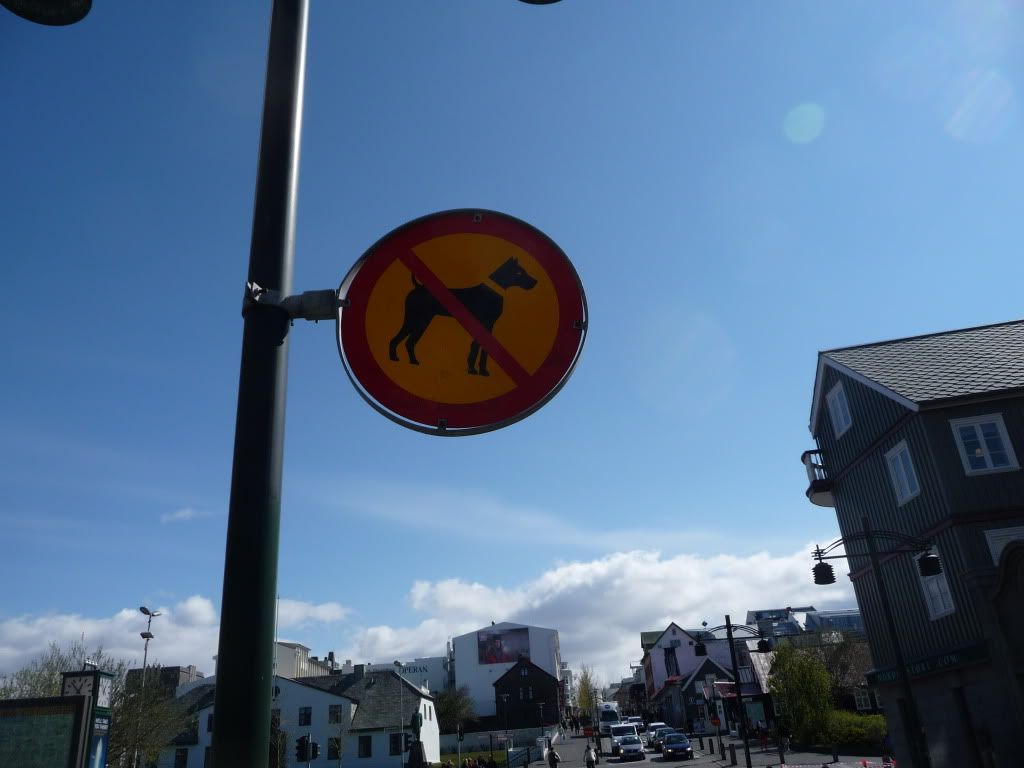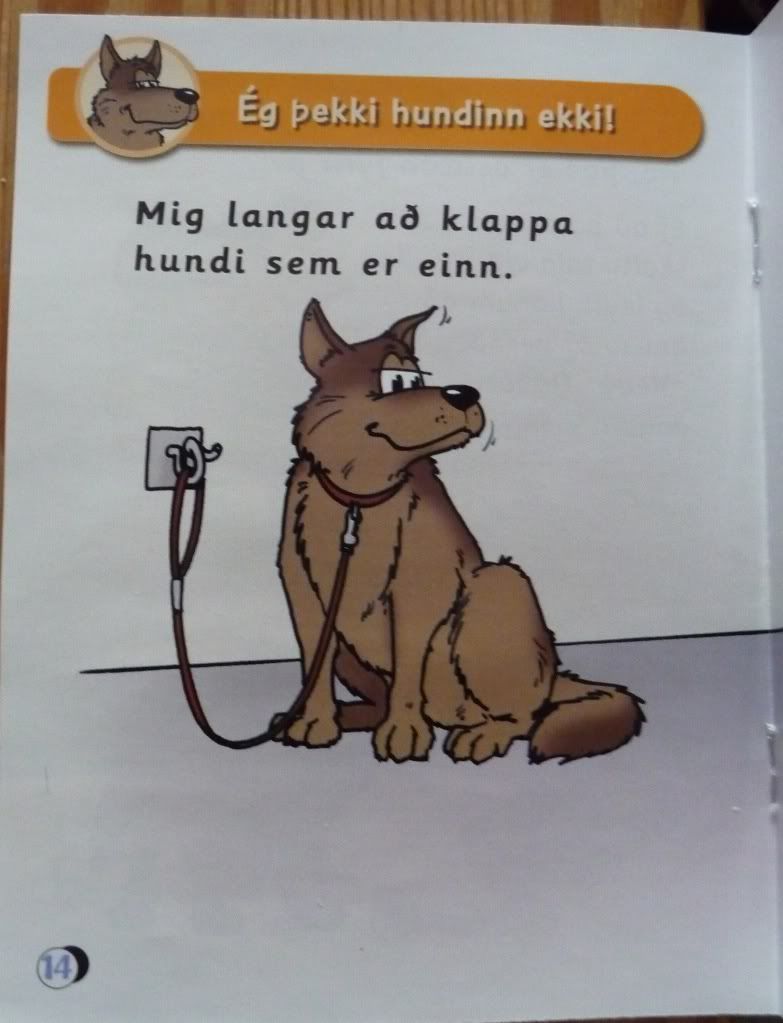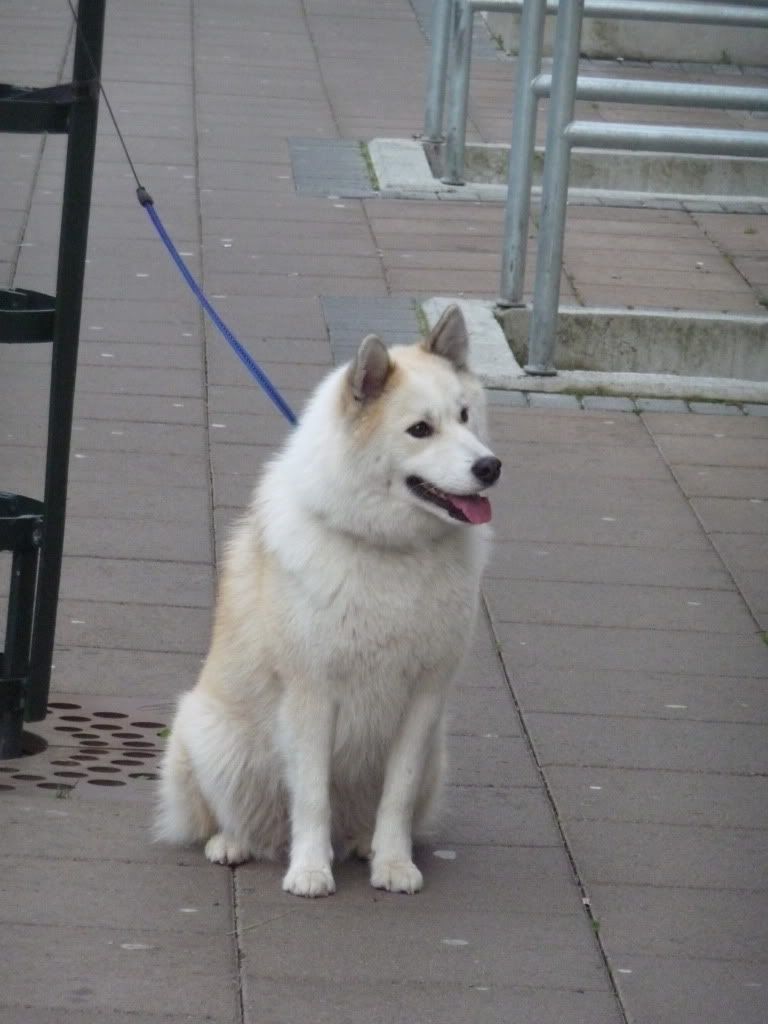Dogs Posted by sequoia on Jun 12, 2012 in Icelandic culture, Icelandic history
Reykjavík-ians (Reykvíkingar – often towns and small areas have a special name for their inhabitants, although I think it only shows up in Icelandic about as much as in English) have a strange thing with dogs.
It’s said that in the past, dogs were completely banned from the capital and you couldn’t even own one. This is despite the fact that they had sheepdogs in the countryside, and it’s still easier to own a dog in the country than in the capital.

Even now you see a lot of “no-dog” streets, where it’s actually illegal to walk your dog (although I’m not sure how heavily it’s enforced).

Sometimes you see dogs tied up outside of shops while their owners are inside. All the dogs I’ve seen in the capital have been smaller than the average American dog, even the ones that are supposed to be a large breed.
If you do own a dog, you have to pay special taxes on it. You get a tax break if you take the dog to a training school, but I’ve been told that “afterwards your dog loses all personality” if you do so. It’s true that most dogs here act very reserved – they don’t bark, they don’t jump up on you, some don’t even react at all when you pet or talk to them. The ones who act more normally tend to be puppies. People also bathe and groom their dogs extremely frequently, so they never feel dirty or smell bad.
I’ve been told that Reykjavík kids are taught to avoid dogs because their parents think the dog will bite them unprovoked. I’ve seen kids yelling at dogs that were only quietly whining while laying down, too. Most people here have cats, and while it’s very seldom that you see an unleashed dog, cats wander around everywhere and some don’t even have collars.

“I don’t know the dog!
I want to pet a dog that’s alone.”
mig langar – I want
að klappa – to pet
hundur – (a) dog
sem – that is, which is, who is
einn – alone, one
The above is from a free pamphlet give out by Hundaræktarfélag Íslands (The Dog-Raising Community of Iceland). They also teach some training courses. The pamphlet is something intended for you to read to your kids, and it explains common sense about dogs (don’t wake them when they’re sleeping or bother them when they’re eating, etc.) although some of the things in there seem a bit wrong to me. I for example, think it’s better to teach kids what to do if a dog does bite you than to teach them “if a dog of any mood comes towards me and I feel scared I should curl up into a ball”.

What’s this white thing? A mailbox in Reykjavik!
eigandi – owner (plural “eigendur”)
hundeigandi – dog-owner
dýralæknir – “animal-doctor” veterinarian
taumur – leash (possibly multiple words for this, will research it and see which ones are used then come and edit this post)
þjálfa – training
að sitja – to sit
að liggja – to lay down
að urra – to growl (only for dogs)
að gelta – to bark
að kasta – to throw (a ball)
að bita – to bite
að stökkva – to jump, leap, gallop (maybe you can use it for “jump up”, for a dog?)
að koma – to come
ból – dwelling, lair, bed (this word is used to mean a doggie bed)
bolti – ball, bolt
skott – tail, trunk of a car
laus – “loose, free”, it’s used to mean a dog off it’s leash, and probably a regular loose dog too.

Má ég klappa hundinum þínum? – May I pet your dog?
Strjúktu honum mjúklega – Stroke him softly (as a command)
This pamphlet teaches kids to get off of their bicycles and skateboards when around dogs so as to not make them scared, and to not run around them either. It also says that you can/should just feed dogs whatever food you have in your hands if they want it, “just explain to an adult what happened later”. This pamphlet is for kids ages four and up.

Build vocabulary, practice pronunciation, and more with Transparent Language Online. Available anytime, anywhere, on any device.
About the Author: sequoia
I try to write about two-thirds of the blog topics on cultural aspects and one-third on the language, because there's much more out there already on the language compared to daily life information. I try to stay away from touristy things because there's more of that out there than anything else on Iceland, and I feel like talking about that stuff gives you the wrong impression of Iceland.





Comments:
Daniel:
I thought the word for lead was ‘ól’.
Is ‘taumur’ a lot more common, or are both used, or.. ?
sequoia:
@Daniel I don’t know, it’s completely possible I’m mistaken because I’ve only read a few things about dogs. But at least in one place I was reading they used “taumur”… the other thing is sometimes people just make up words because they don’t know the more standard word (and maybe only know the English word), I’ve seen that a lot with internet/computer words for example. I’ll try and do some more research to get an idea of which one is in the majority, then report back, but it might take a while because I’m pretty busy right now.